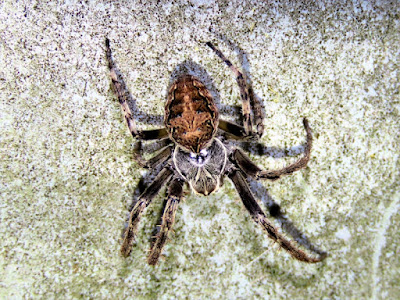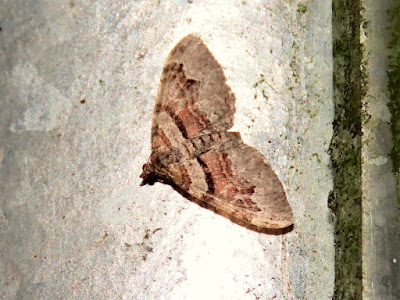Priorslee Lake and The Flash
13.0°C > 14.0°C: Medium overcast. Light NE wind. Very good visibility.
Sunrise: 06:16 BST
Photos will be added to tomorrow's log.
A very quiet morning with few people about and very little traffic on the roads. Not many birds either!
Priorslee Lake: 04:45 – 06:35 // 07:40 – 09:20
(190th visit of the year)
Bird notes:
- All four Mute Swan cygnets seen with the cob chasing the fourth in to the reeds.
- A low number of Black-headed Gulls arrived first thing to feed on the football field. To add some confusion a few decided to use the academy playing field instead.
- A Hobby shot across the football field just as I was climbing in the car to leave.
Overhead:
- 25 Canada Geese: all outbound in three groups
- 115 Wood Pigeons
- 1 Collared Dove
- 1 Hobby
- 1 Black-headed Gull
- 34 Lesser Black-backed Gulls
- 4 Jackdaws
Hirundines etc., noted:
- 1 Barn Swallow flew NW at 08:20
Warblers noted:
- 7 Chiffchaffs: two noted in song
- 2 Blackcaps
Count from the lake area:
- 2 + 4 (1 brood) Mute Swans
- 16 (11♂) Mallard
- 8 Moorhens
- 63 Coots
- 9 + 5 (3 broods) Great Crested Grebes
- 62 Black-headed Gulls only
- 1 Herring Gull: adult, briefly
- 28 Lesser Black-backed Gulls: 20 of these (near) adults; all stopped only briefly
- 1 Cormorant: arrived
- 1 Grey Heron: departed
On / around the street lamps pre-dawn:
With the wing blowing on to the lamps there was very little about
Moths:
- 1 micro moth still to be identified
and
- 1 Plumed midge (Chironomus plumosus)
- 3 different spider sps.
- 3 Dicranopalpus sp. harvestman
In the sailing club shelter pre-dawn:
Spiders etc.:
- Bridge Orb-web Spiders (Larinioides sclopetarius)
- Walnut Orb Weaver (Nuctenea umbratica)
- Noble False Widow (Steatoda nobilis)
Other things:
- gnat sp.
- possible Grouse Wing caddis fly (Mystacides longicornis)
Later:
Very little seen:
Bees / Wasps etc.:
- [not even a Common Wasp (Paravespula vulgaris) collecting nesting material from the Priorslee Avenue fence]
Hoverflies:
- Chequered Hoverfly (Melanostoma scalare)
Molluscs:
- White-lipped Snails (Cepaea hortensis) as ever
Mammals:
- 1 Grey Squirrel
The same feature is evident on the right wing of this bird. The moulted coverts mean that the light shines between the shafts of the secondaries. This bird has also lost most of its inner primaries. Its identity as a Lesser Black-backed Gull is confirmed by the wide white trailing edge to the secondaries – it is noticeably narrower on Herring Gulls.
Still working on this small moth. The back of the wings reminds me of a grass moth but the palps seem to curve over the face so it must be another family entirely.
This Bridge Orb-web Spider (Larinioides sclopetarius) was posing particularly well. It is not typical of many that I see which have much more contrasting black and white markings (as opposed to dark and light brown as seen here).
(Ed Wilson)
------------------------------------------------------------------------------------------------------
Between the lake and The Flash:
- 1 Chiffchaff calling between the pools
- 1 Blackcap calling at the lower pool
Noted on lamp poles:
- 1 Brimstone Moth (Opisthograptis luteolata)
- 1 Square-spot Rustic moth (Xestia xanthographa)
Round the back of the same pose was this Garden Carpet moth (Xanthorhoe fluctuata)
(Ed Wilson)
------------------------------------------------------------------------------------------------------
In the Priorslee Avenue tunnel:
- 1 Double-striped Pug (Gymnoscelis rufifasciata)
- 1 presumed Common Marbled Carpet (Dysstroma truncata): Common Marbled and Dark Marbled Carpets only separable by the markings underwing.
- 1 Garden Spider (Arameus diadematus) at least
- 2 Leiobunum rotundum harvestmen
(Ed Wilson)
------------------------------------------------------------------------------------------------------
The Flash: 06:40 – 07:35
(173rd visit of the year)
Firstly an important omission from Saturday's log from here. I heard and then saw a Kingfisher which was remarkably my first here in 2021. It is species #75 for me here this year and my first addition to the year list for over two months.
Bird notes:
- Best bird here today was a duck Shoveler. For some weeks now the Mallard have been behaving rather like Shovelers, feeding by sifting from the surface while swimming in circles to bring vegetation to the surface. As I approached the group alongside Derwent Drive I heard the characteristic wingbeat of a Shoveler taking to the air. This bird was obviously less trusting of humans than the resident Mallards. It did not fly far.
- Today it was the turn of the Tufted Duck to be in rather low numbers than recently.
Birds noted flying over here:
- 4 Wood Pigeons
- 5 Black-headed Gulls
- 2 Lesser Black-backed Gulls
Hirundines etc., noted:
None
Warblers noted:
- 6 Chiffchaffs: one heard in song
On /around the water:
- 5 Canada Geese
- 3 + 2 (1 brood) Mute Swan
- 1 (0♂) Shoveler
- 53 (?♂) Mallard
- 39 Tufted Duck
- 10 Moorhens
- 40 Coots again
- 2 + 3 (1 brood) Great Crested Grebes
- 24 Black-headed Gulls
- 2 Grey Herons
On various lamp poles:
Moths: a bumper haul
- 1 Garden Carpet (Xanthorhoe fluctuata)
- 2 Flame Carpet (Xanthorhoe designata)
- 1 Brimstone Moth (Opisthograptis luteolata)
- 1 Canary-shouldered Thorn (Ennomos alniaria)
- 1 Common Rustic agg. (Mesapamea secalis agg.) [what was 'Common Rustic' moth has now been identified as three separate species: Common, Lesser Common and Remm's Rustic; they are separable only by genitalia examination]
Other things:
- 3 Dicranopalpus sp. harvestmen
- 2 Leiobunum rotundum harvestmen
One of the Grey Herons standing on one of the bridge hand-rails.
Surly not thinking of diving off for a fish?
Walking carefully along with toes wrapped around the hand-rail.
And now on the other side of the bridge.
For some reason the orange Neighbourhood Watch sign on a lamp pole seems to attract moths. Here is a Brimstone Moth (Opisthograptis luteolata) keeping guard.
My first-ever Flame Carpet moth (Xanthorhoe designata) here. There was another on the next lamp down. You wait years and two come along together: typical.
I logged this moth yesterday as a Canary-shouldered Thorn (Ennomos alniaria) but it somehow seemed wrong. It is too orange-looking and typically the front of the thorax of that species is a mass of yellow hairs. There are two other thorn moths active at this date – the August Thorn (E. quercinaria) and September Thorn (E. erosaria). The latter has the cross-lines coming much closer together near the body. On the former the front cross-line sharply bends as it nears the very wing edge and it is not obvious on this specimen. All thorns moths typically rest with their wings held partly closed. Looking at all the photos on the Norfolk Moths site I have concluded that this is an August Thorn (my first). For me the clinching feature is the shape of the wing trailing edge: all the other thorn moths have a projection much closer to the wing-tip than this specimen.
One of the Common Rustic group of moths (Mesapamea secalis agg.) that need genitalia examination to specifically identify. I do not see this common and widespread species very often.
(Ed Wilson)
------------------------------------------------------------------------------------------------------
On this day can be found via the yearly links in the right-hand column.
Sightings from previous years without links are below
2012
Priorslee Lake
Black Tern
(Arthur Harper)
Priorslee Lake
Black Tern
(Arthur Harper)
2010
Priorslee Lake
Yellow Wagtail
Kingfisher
(Ed Wilson)
Priorslee Lake
Yellow Wagtail
Kingfisher
(Ed Wilson)













